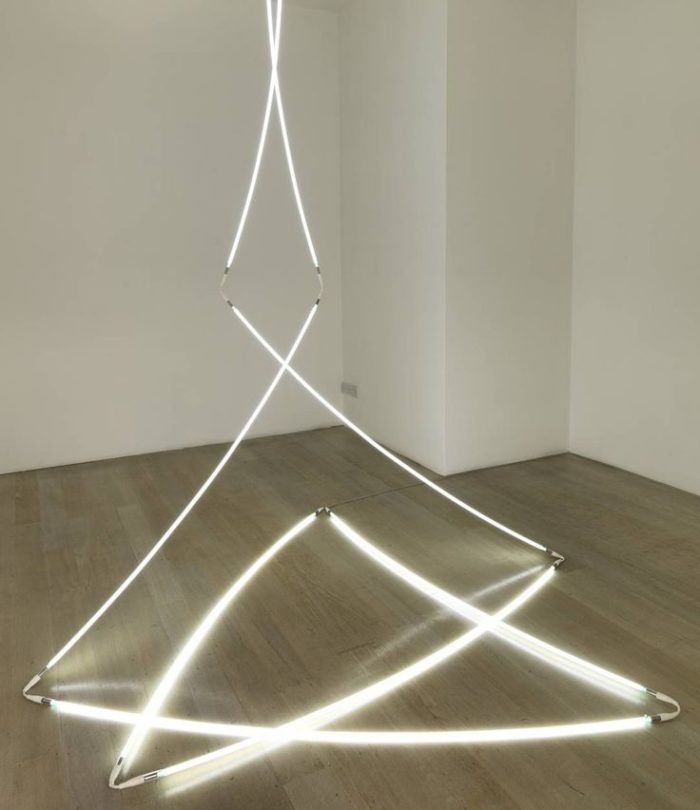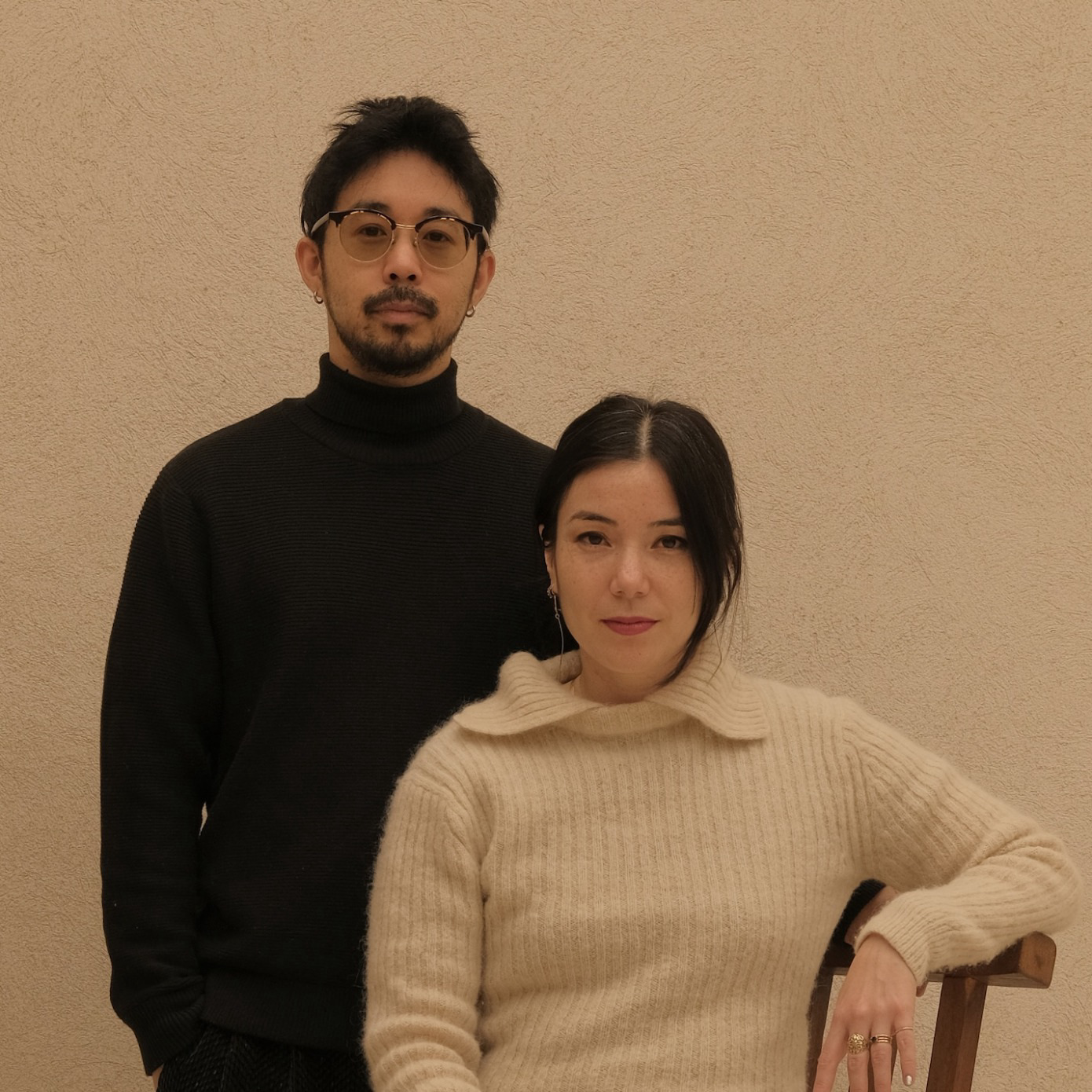
Using materials such as fabric and neon, French painter and light artist François Morellet was a pioneer in the field of geometrical abstract art, devising complicated mathematical systems to remove the creator’s subjective viewpoint. In 1961, alongside such figures as Francisco Sobrino and Julio Le Parc, he was a founder of the opto-kinetic Groupe de Recherche d’Art Visuel, which maintained that the viewer is an integral participant in an artwork. Before his recent death in May at age 90, he spoke with curator Hans-Ulrich Obrist on the occasion of his exhibition “Les Règles du Jeu” at London’s Mayor Gallery, one of 11 solo shows taking place this year. Following are excerpts from that conversation, which appears in full in the Mayor Gallery’s exhibition catalogue.
You studied painting with Jean-Denis Maillart; however, you are an autodidact. How did you come to art? I was influenced by my father, who loved artists—even more than art itself, as his collection was not brilliant—and I took some lessons at Jean-Denis Maillart’s studio in 1941, when I was 15 years old.
How did you come to abstraction in your painting? My very first abstract drawings date from 1948. In 1949, influenced by the Tribal Arts at the Musée de l’Homme, I made paintings close to abstraction, but it was only in 1950 that I started doing abstract geometrical paintings.
You were friends with the painters Pierre Dmitrienko and Serge Charchoune. How did you meet them? Through Dany Lartigue, I met Pierre, who was very interesting, and then François Arnal. They both worked in Dany’s studio. We met quite often even though I was working at my family’s factory in Cholet, 350 kilometers from Paris. I met Serge at Galerie Raymond Creuse, where I had an exhibition in 1950, but he was not a friend, he was older. His work was very subtle with its light colors. I am still an admirer of his work, which should be better known than it is.

How did they influence you? For my first abstract works in 1950, Dmitri advised me to be ‘larger,’ and Charchoune advised me to use lighter shades.
In 1948, you read ‘La Psychologie de l’art’ by André Malraux. It was a very strong influence, which pushed me to particularly admire the Oceanic tapas, which are abstract geometrical, repetitive, made by women, without pretense. They are the opposite of the magic artworks from Africa that influenced Picasso, Braque, etc. Later on, looking at an old photo of Matisse’s studio, I was pleased to see a number of these tapas on his walls.
You had a good friendship with Max Bill. How did it happen? I discovered Max’s work through the intermediary of Brazilian artists, and particularly Almir Mavignier, in Rio de Janeiro in 1950, when I contemplated moving there with my wife. These enthusiastic artists showed me reproductions of Max’s work in a journal featuring a retrospective at São Paulo’s Museum of Modern Arts. Almir came to Europe in 1951 and later became a student at the Hoschule für Gestalltung, directed by Max. I was lucky that, through Almir, I came to meet him and I started a friendship right away.

What was his influence on you? Through his work, I learned the rules of concrete art, dictated in 1932 in Van Doesburg’s manifesto, which converted me.
I read this sentence about the changing attitude of the artist ‘from the artist as creator of meanings to the artist as a witness of phenomenon.’ How did you become interested in the mathematical or systematic aesthetic? There is nothing aesthetic about my interest in systems or mathematics. The use of systems allows me to develop works whose compositions are dictated by the ‘rules of the game,’ independently from my taste, and without final choice from my side. My systems fix the rules of the game and mathematics execute the composition and give the final visual form. In fact, I always try to do the least amount possible!
Can you talk about the foundation of the Groupe de Recherche d’Art Visuel? The three Argentine artists, Horacio Garcia Rossi, Julio Le Parc and Francisco Sobrino, first visited Vasarely, who pointed them to François and Vera Molnar, then to me and to Vasarely’s son Yvaral. I contacted Joel Stein—an old friend and accomplice since 1949—so he could also join the group.
What were your motivations? My industrial activity had me living far from Paris and the art world. GRAV was an opportunity to share and develop our ideas about the status of the artist and the role of the spectator; to have a permanent audience for my works; to ‘wow’ friends seeking to outdo each other, thus stimulating creation; and to be more often invited to exhibit in a group rather than remaining alone.

In the third Biennale of Paris, GRAV installed a labyrinth. Can you talk about your works on the labyrinth? In this labyrinth the first room was entirely covered with wallpaper reproducing a work of mine from 1960, Répartition aléatoire de 40.000 carrés suivant les chiffres pairs et impairs d'un annuaire de téléphone, 50% rouge, 50% bleu. In room three, there was a 100 x 100 cm work made of 64 white bulbs with four lighting rhythms. In the last room, there was my first neon work, Néon 0°-45°-90°-135° avec 4 rythmes interférents, made of four 80 x 80 cm panels, with four white neon lights facing each other on the four walls of the room. The alternated lighting was very bright, quite unbearable for the visitors. Finally, a large 240 cm diameter sphere was placed outside the labyrinth, in the great stairs of the Musée de la Ville de Paris, where this biennale took place. There were also murals by Le Parc and Yvaral.
Can you discuss the transition of composition to structure/frame? Does it mean that these works could be potentially continual? In 1952, I discovered the Muslim linear art on the walls of the Alhambra in Granada, with its ingenious engraved interlacing ‘all over.’ It came to me as a shock, which would influence my work on the line and my love for the ‘all-over.’ From 1953, the repetitive patterns or the networks of superimposed trames on my works incited the eye to imagine the continuation of the lines and shapes beyond the edge of the painting. I had also stopped framing my works in 1952.
Your first work with neon was made in 1963. Why use neon, and how did it develop in your work? With my friends from GRAV, we wanted to end the conventional artistic practice of canvases, paintbrushes and easels. In my quest for new artistic materials, neon had all the qualities I liked: It was perfectly linear; the lighting allowed rhythms of brutal flashing; it had an industrial origin; its use in public advertising was very vulgar at the time, which I liked; and there was a neon producer in Cholet, who was very efficient and enthusiastic.

Did you know Dan Flavin at the time? No, I met Dan Flavin at the opening of the exhibition ‘Kunst Licht Kunst’ in 1966, at the Stedelijk van Abbemuseum in Eindhoven, Holland. His long work with green fluorescent tubes was fabulous.
Then, in 1967, there was Néons avec programmation aléatoire-poétique-géometrique. Why did you choose these words: NON, NUL, CON, CUL (No, Nul, Cunt, Ass)? This work is composed of three squares crossed by diagonals. Each square has four neon tubes for all four sides, plus two tubes for the diagonals. All these tubes are assembled into groups whose on/off rhythms are shifted. Among the wide variety of possible geometric shapes, some of them may form the CLNOUXZ letters. As I like swearwords and provocation, this was an opportunity to associate my rough poetry with my rigorous geometry to make people smile.
Can you talk about your systems: Juxtaposition Superposition, Hasard (Chance), Interférence and Fragmentation? What is the significance of these? I like to demystify the artist’s work and to rationalize my own work. This led me to publish in 1974 this classification based on my conception’s processes to trivialize my works. This was a complicated exercise, which, if I had pursued it, would have resembled the animal classification by J.L. Borges!

Why do you make systems to make art? Because I always wanted to distance myself from my works. Since the 1950s I’ve tried to eliminate all trace of sensibility in the making and reduce as much as possible the number of subjective decisions in the conception of my works. My systems, associated by chance, are the producers of my works, and if one finds them brilliant or ugly, I am not responsible.
Your neon works began in 1963. What did the neons represent at the time and what do they represent today? In 1963 my neon works were provocative, vulgar and unsellable. I had to wait 20 years to sell my first one! Today, they are stylish, expensive and very trendy.
Can you tell me about your unrealized projects, or projects too big to be realized? My work is based on a game with constraints, which is why I love so much the ephemeral installations, site-specific and public and private commissions for architecture. When there are no constraints, I invent them with my systems and chance. The need of being feasible is one of my basic constraints before imagining a project. Furthermore, I was never impressed by huge things. As a child, I annoyed my parents with my interest in the gravels at the foot of the Eiffel Tower rather than looking at the tower itself.




